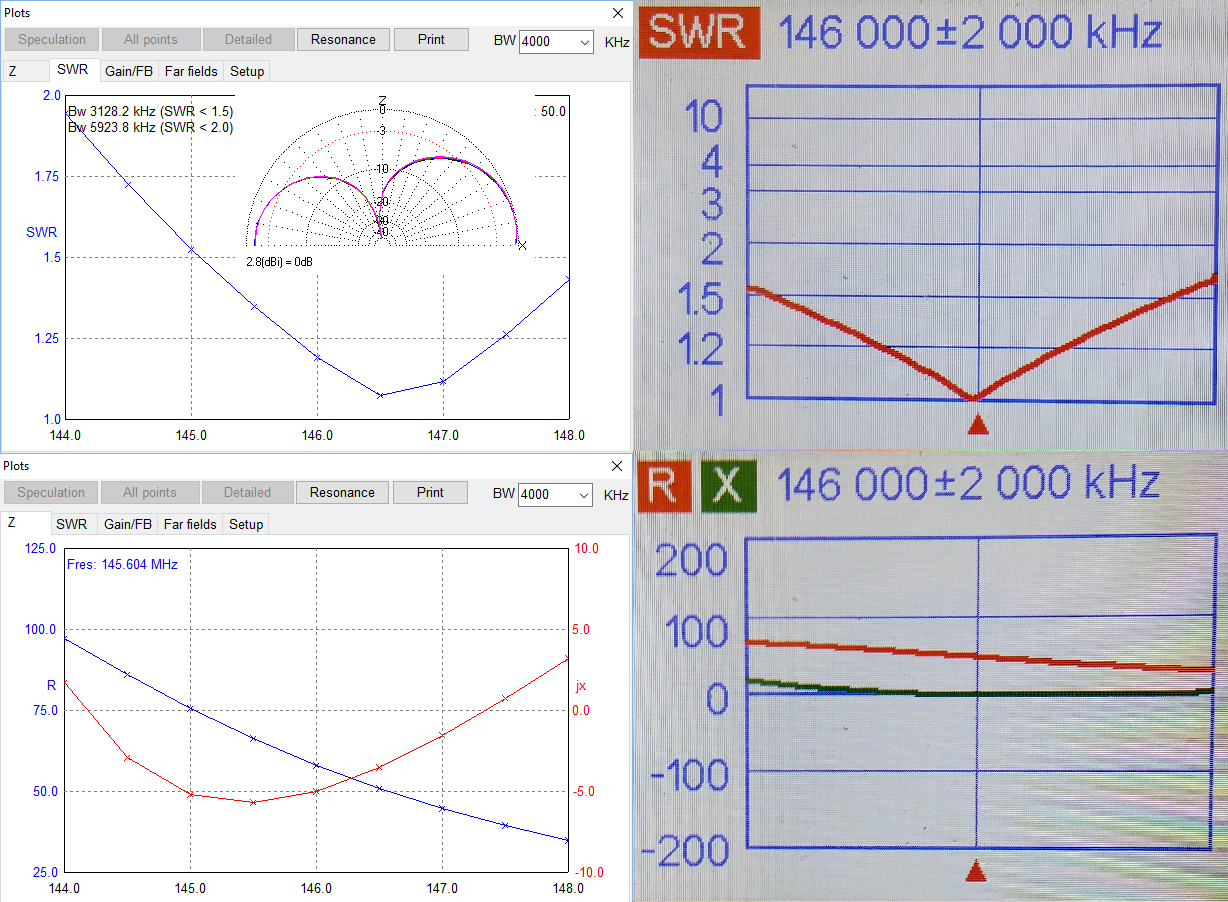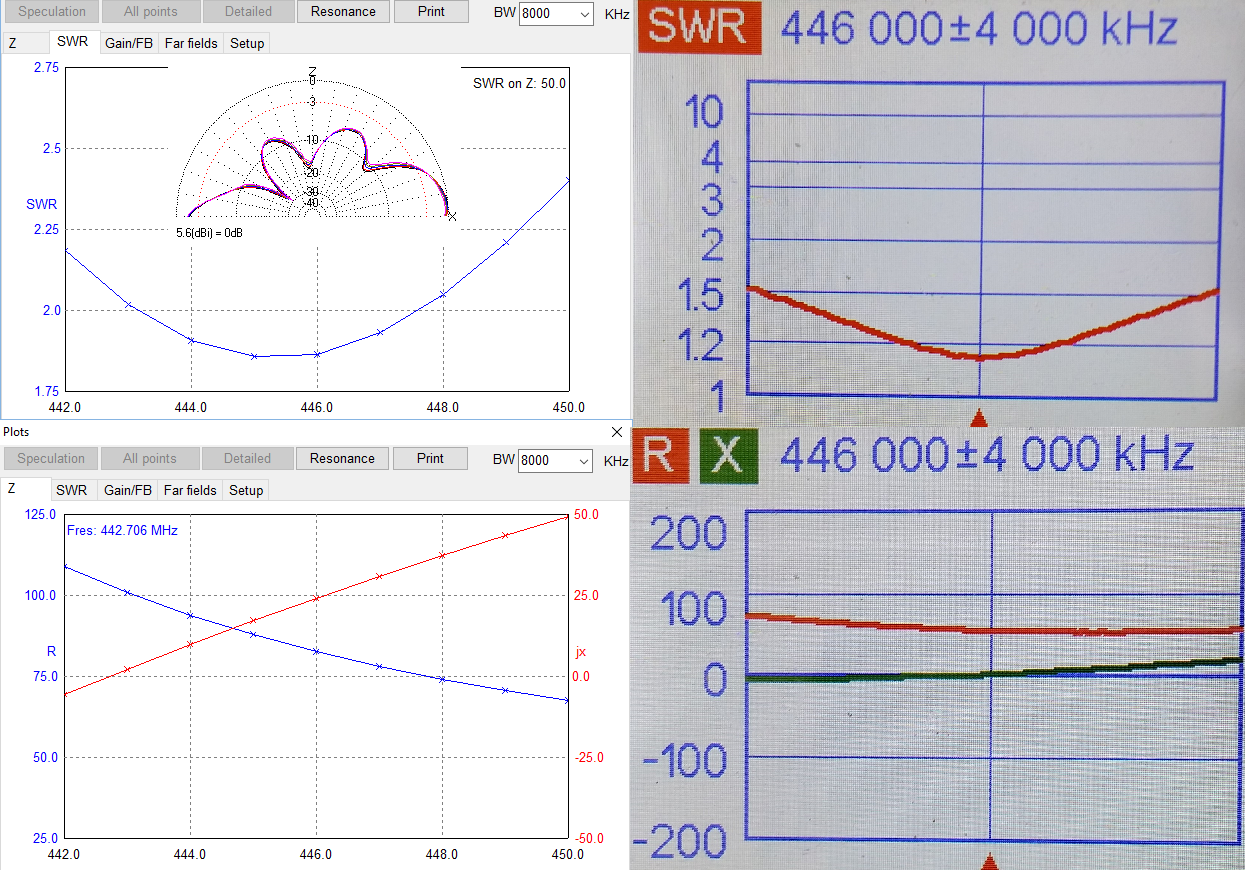ver.3 (1/2" pipe) with a spider - click for high-resolution photo
ver.2 (3/8" pipe)
ver.1 (1.7 mm wire) following DL2KQ design
http://dl2kq.de/ant/3-85.htm



- efficient transmission at low angles on both UHF and VHF bands
- one not two expensive UHF coax, suitable for modern transceivers with one VHF/UHF connector
- close to 50 Ohm impedance on both bands at the single feed point
- bandwidth: 4MHz on VHF, 12MHz on UHF by SWR 1.5 : 1 or 6MHz on VHF, 18MHz on UHF by SWR 2.0 : 1
- covers the whole VHF band 144 - 148MHz and at least repeaters segment 442 - 450MHz of UHF band
- operates as almost standard J-Pole on VHF, and modified Super-J-Pole on UHF
- reasonably short <1.5m and sturdy self-supporting construction
- uses soldered female N-connector and a coax, rolled into a 5 turn 6 inch diameter choke
- independent tuning on VHF (by feed point and J-element) and UHF (by phasing stub)
- DC-short feed point to eliminate static electricity and lightning-induced currents
- initial tuning stays for years, because of relatively wide bandwidth and mechanical stability of thick J-element and phasing stub
- transmits on both bands even in horizontal position, on the vehicle roofrack - via repeater in 90 km, 5 watts handheld FT-2DR, with full quieting, no voice drops.
ver.3 (1/2" pipe) with a spider - click for high-resolution photo |
ver.2 (3/8" pipe) |
ver.1 (1.7 mm wire) following DL2KQ design |
 |
 |
 |
MMANA simulation on VHF:

MMANA simulation on UHF:

